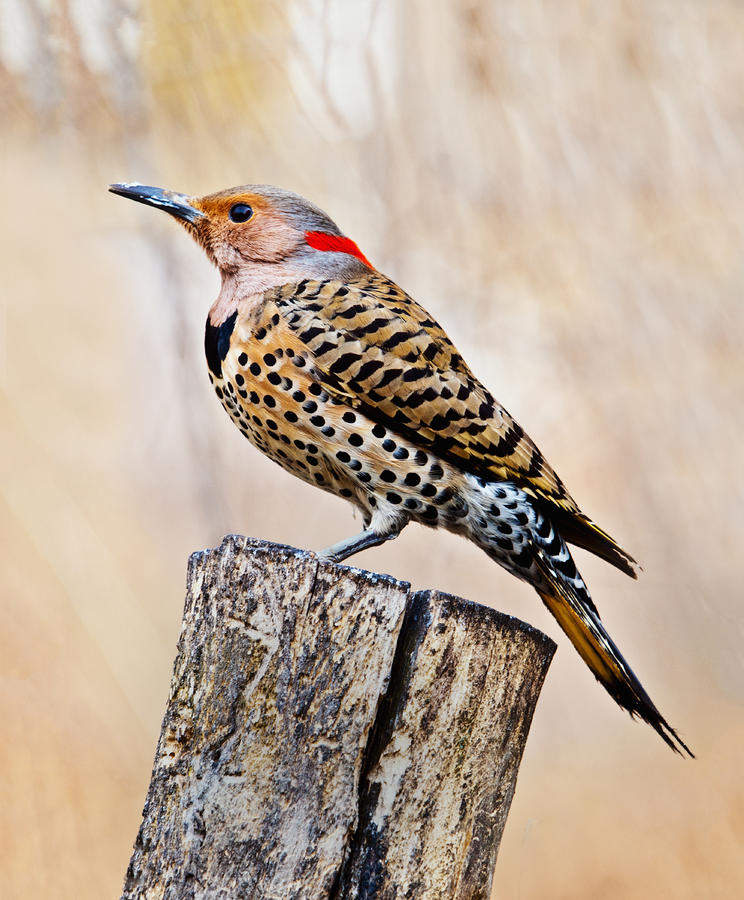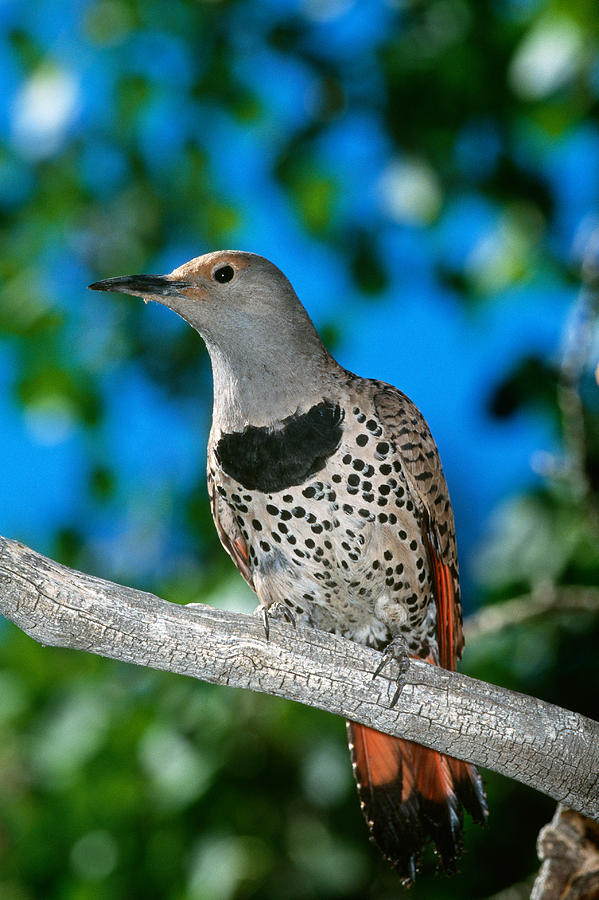


The most significant change again was the increase in the number of wintering birds, with regular reports as far north as the cities of Duluth and Moorhead. Green and Janssen’s updated account of the flicker (then identified as the Common Flicker) in 1975 also described it as a numerous and widespread species throughout the state. Roberts wrote of a fall flight he witnessed in Itasca State Park in September 1921, when “for several days thereafter the ground was covered with flickers and robins too numerous even to estimate.” During his own lifetime, the most notable change in the flicker’s distribution and abundance was an increase in the number of birds that attempted to spend the winter in southern Minnesota. Although common during the breeding season, some of the most notable reports were of huge flights of birds seen during migration, particularly during the fall. Breeding evidence, including both confirmed (nests with eggs or young) and inferred nesting records (nest excavation, nests, or feeding young) was available from 7 counties stretching from Jackson County east to Goodhue County, and north through Ramsey, Hennepin, McLeod, and Meeker Counties in central Minnesota, and Marshall County in the far northwest. Roberts described the Northern Flicker as a common breeding resident throughout the state. Roberts’s examination of the specimens led him to conclude, however, that they were both hybrids between the Northern (i.e., Yellow-shafted) and Red-shafted species. In the early 1900s there were two specimens and a couple of sightings of the latter bird in Minnesota. Indeed, when Roberts wrote his account of the bird in 1932, he had two separate entries: one for the Northern Flicker, and one for the Red-shafted Flicker.
#FLICKER FEMALE FULL#
The name Northern Flicker, originally another name for the Yellow-shafted Flicker, came into use again when a southern race, the Gilded Flicker, was separated into a full species. This difference, coupled with other plumage differences on the head and nape, led biologists to consider the two forms distinct species until the 1960s, when the combined species became known as the Common Flicker. Farther west, these same features are red, thus the name Red-shafted Flickers. Birds that reside in Minnesota’s open woodlands have yellow tails, wings, and feather shafts. Depending on when the taxonomic decisions were made, Minnesota flickers have been known as Northern Flickers, Yellow-shafted Flickers, and Common Flickers. It has been known by a variety of common names as biologists have separated or combined different races into full species. The Northern Flicker is a common breeding resident throughout Minnesota.


 0 kommentar(er)
0 kommentar(er)
